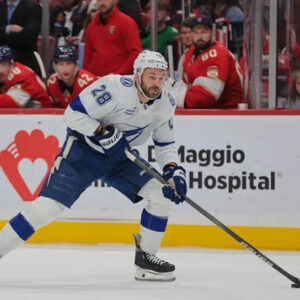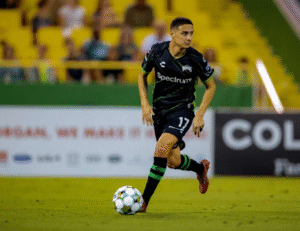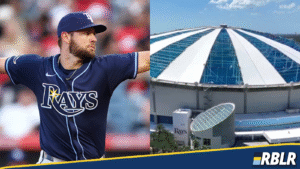RBLR Rays Roundtable #17 – A Big Littell trade?, A Ras Retrospective, and the Kim Conundrum

This week, our writers looked at what kind of return a Zack Littell trade could yield, looked back at what Drew Rasmussen has done for this team, and looked ahead at what Ha-Seong Kim’s impact on the roster could be when he’s ready to make his return.
Dustin Teuton (u/FLBoy19) : A Littell return
A key component of being a Tampa Bay Rays fan is accepting the constant roster churn. Regardless of record, the Rays are rarely true buyers or sellers – they mix both approaches at the deadline. This year looks no different. Despite being five games over .500 as of June 6th, several players are set to hit free agency, and the Rays will likely only move those they can replace internally.
Among them, Zack Littell stands out as the most likely trade piece due to the AAA depth behind him. A reliable innings-eater whose stuff should tick up in a bullpen role, Littell won’t bring a major return but could net a high-variance DSL or complex league prospect – a profile the Rays love to gamble on.
Two possible fits:
Chicago Cubs – With a strong offense, the Cubs are likely buyers looking to patch the rotation. Littell wouldn’t cost much, but the Cubs have several high-upside, lower-level prospects. One is Eli Lovich, a 19-year-old corner outfielder in the Arizona Complex League. He’s tooled up with big power – flashing 108+ mph exit velocities – and combines that with a line-drive approach, a 76.4% contact rate, and a manageable 20% strikeout rate.
Los Angeles Dodgers – Perpetually battling rotation injuries, the Dodgers have the depth to deal. Samuel Sanchez, an undersized 19-year-old righty, could intrigue the Rays. He posted a 5:1 K:BB in the DSL and A ball in 2024 and owns a 4.8% BB rate in A ball with a 16.7% K rate. His fastball sits 92–95 with 18” of vertical break and pairs well with a plus changeup. Though his small frame (5’11”, 150 lbs) raises durability concerns, his ceiling is that of a back-end starter or solid bullpen piece with a riding fastball and changeup combo.
Jake Shutters (@JakeShutters) : Reflecting on Ras
In 2021, the Rays were faced with an interesting roster dilemma, as they had an established young shortstop on their roster while having a certain blue chip top prospect waiting in the wings for his opportunity.
The Rays decided to move on from Willy Adames, trading him to Milwaukee in exchange for Drew Rasmussen and JP Feyereisen. While Feyereisen had a phenomenal stretch with the Rays before injury derailed his career, Drew Rasmussen has stuck around and quietly become one of the best Rays pitchers of, yes, all time.
It’s hard not to root for Drew Rasmussen. After three long term injuries, including two Tommy John surgeries, Rasmussen has continued to simply produce year over year. 2025 is no different, and so far one of the best seasons of his career. Through 12 starts and 63 innings, Drew is running a 2.14 ERA, a 3.29 FIP, and a 3.24 xFIP (20th in baseball, minimum 60 IP).
Rasmussen doesn’t strike too many batters out (23.5% this season), but is running a top 30 K-BB% in the league at 18.1% (notably, the same rate as Jacob DeGrom). He has pounded the zone, avoided giving up barrels (5.4%), and allowed his top 5 defense in baseball to make his life easier, with his 51.2% ground ball percentage. He has cemented himself as a true #2 starter and should fit into that role nicely once Shane McClanahan returns.
Now, back to what I mentioned earlier, specifically the “one of the best Rays pitchers of all time” statement. Since 2021, two Rays pitchers have accumulated 8 fWAR. One is Shane McClanahan, the other is Drew Rasmussen.
Rasmussen has the best ERA from any Rays pitcher (min. 200 IP) since 2021, and, interestingly enough, the best ERA of any Rays pitcher EVER with at least 200 innings pitched. He’s top 10 in Rays franchise history in fWAR while only being #32 in innings pitched. In an era of Rays baseball with so much roster churn and turnover, Rasmussen, excluding injury, has been a steady force in the rotation and has been a pleasure to watch and an underrated, never give up story across Major League Baseball.
Jacob Macauley (@raysfarmreport) : Kim’s affect on the roster
In last week’s rendition of the roundtable, I highlighted the skills that shortstop Ha-Seong Kim provides to the infield group and concluded with the fact that there will need to be an active and 40-man roster decision made. So this week, I will provide the three most likely candidates and discuss which skills they all possess.
Curtis Mead: On the surface, he seems like the most likely candidate to be sent down, but he provides the Rays with unique skills that the other two do not. Mead showed out during spring training, hitting for a 235 wRC+, then fell flat on his face in April to the tune of an anemic 25 wRC+. Mead has since rectified that dreadful stretch of baseball with a 133 wRC+ since the calendar turned May.
What skills can Mead provide to this infield group? Mead truly has a unique bat; he is posting an obscenely high 91.5% Z-Contact% (~85th percentile) while improving his O-Swing% to 25% (~90th percentile), and Mead is doing this while maintaining his plus 73.3 MPH bat speed (~75th percentile). Curtis has also made substantial strides with all three of his defensive positions. Mead has posted 2 DRS at 2B (71.2 innings), 1 DRS at 3B (32 innings), and 1 DRS at 1B (95 innings).
Taylor Walls: Certainly the least likely of the three players to get sent down, but this is a very challenging roster move, so let’s go over what Walls provides. Taylor’s calling card will always be his 80-grade SS defense. Walls in his 5 year major league career has racked up 47 DRS (in 2,362 innings), given the Rays mindset when it comes to roster construction, that will make it very challenging for the Rays to ever decide to send Walls down.
Walls is a career 69 wRC+ bat in his 1,398 PA and has gotten significantly worse this season. Walls seems to have tinkered with his plate approach this season. Walls is sporting a career high 89.2% Z-Contact% (~65th percentile), as well as using the opposite field the most he ever has in his entire career at a 37% clip (~95th percentile). Walls has yet to gain any sort of traction at the plate this season, posting a career low 52 wRC+, and a feeble .037 ISO. In my opinion, and more than likely in the Rays opinion, Taylor’s glove and his plus base running are more than enough for him to hold a roster spot.
Jose Caballero: He’s had a pretty unique season up to this point, providing the Rays with a true “super utility man.” Jose has made endless contributions to this ball club so far, playing: 2B, 3B, SS, LF, CF, and RF. Caballero has produced the 2nd most DRS on the Rays with 7 (in 374.1 Innings).
The Rays utility man has aided the team during a tough stretch to start the season vs LHP, producing a 138 wRC+ vs southpaws. How sustainable is his offensive production? Cabby has cut down his O-Swing% by 6%, but has essentially traded 5% Z-Swing% to make the adjustment, so it virtually makes that improvement null and void. Jose has made some quality improvements to his Z-Contact% but still ranks in the ~40th percentile in that regard, while making very little quality contact with just a pedestrian 28.9% hard hit% (7th percentile).
The RBLR Rays Roundtable is a weekly collection of analysis, insight, and perspectives from a cast of writers assembled because of their unique backgrounds and experience. Check this space weekly for new updates and features covering the Tampa Bay Rays, the Rays’ minor league prospects, and more!






